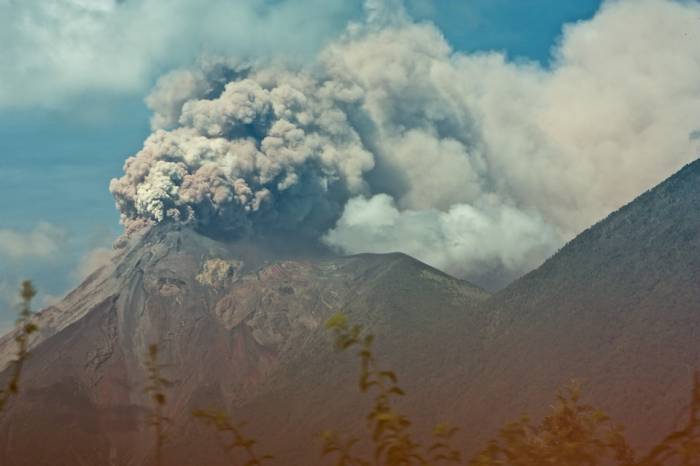As smoke and ash rained onto the nearby capital, volcanic materials covered an 8km (5-mile) radius around the initial eruption site.
The volcano has been reliably active for three years, with a “heartbeat” that saw it erupt around once every 25 days.
However, the latest event has been particularly devastating for surrounding communities, and has already caused destruction on a scale that has not been seen in recent years.
Why has Fuego’s June eruption been so deadly?
Following the eruption, three towns were rapidly submerged by the oncoming volcanic materials and communities were cut off from rescue efforts.
This can partly be attributed to the lack of infrastructure in the region surrounding Fuego. Roads tend to be poorly maintained and most people do not have their own vehicles.
“This volcano is surrounded by real rural poverty, and evacuation is typically done on foot or in vehicles that take a long time to get anywhere,” volcanologist Dr Matthew Watson, from the University of Bristol, told The Independent.
Dr Watson, who has worked extensively at Fuego over the past 20 years, explained that pyroclastic flows have filled most of the valleys surrounding the volcano, making evacuation even more difficult.
What has really set this event apart when compared to the eruptions of recent years, according to Dr Watson, is that it has “gone up an order of magnitude in terms of scale.”
“Rather than pushing pyroclastic flows three to five kilometres downstream, they have gone to maybe 12 or 15km by the look of it,” he explained.
What are pyroclastic flows, and what distinguishes them from lava flows?
In contrast with the lava flows emerging from the Kilauea volcano in Hawaii, Fuego’s eruption has been characterised by pyroclastic flows.
What distinguishes these two phenomena is, primarily, speed. Dr Watson compares the difference between Fuego and Kilauea to “the difference between pouring water down a mountain and pouring honey”.
Both consist of similar kinds of materials – molten rock and other volcanic matter – but while lava flows move at about the pace of someone walking, pyroclastic flows move as fast as a car speeding down a motorway.
These flows form as mounds of volcanic material build up and then collapse, in a process that local Guatemalans have described as “boiling over”.
Pyroclastic flows have rapidly filled the valleys surrounding Fuego, overflowing into nearby communities.
What are the characteristics of a vulcanian eruption?
Fuego’s eruption has been described as “vulcanian” due to its explosive nature, but Dr Watson explained that it also has characteristics of an even larger scale type of eruption known as “plinian”.
Vulcanian eruptions – which take their name from historic events on the Italian island of Vulcano – are characterised by a sticky blob of magma forming beneath the surface of a volcano.
This blob is then explosively blown into the air by the next mass of magma forming below it.
While it is too early to say whether this was the cause of the latest Fuego explosion, Dr Watson said its scale and duration suggest the eruption could be vulcanian.
However, he noted that it also bore the hallmarks of a plinian eruption – marked by their similarity to the eruption of Mount Vesuvius that destroyed the ancient Roman city of Pompeii.
What are the other types of volcanic eruption?
Besides these explosive types of eruption, volcanoes can also exhibit behaviour like that in evidence during the ongoing eruption in Hawaii – a category appropriately known as Hawaiian.
This involves the relatively calm ejection of lava that forms rivers and gradually moves outwards from the centre of the volcano.
The other key category is strombolian, in which eruptions are driven by bursting gas bubbles within the magma. This kind of eruption has been seen in recent eruptions of Mount Etna in Italy.
More about: science












-1745485667.jpg&h=190&w=280&zc=1&q=100)



































